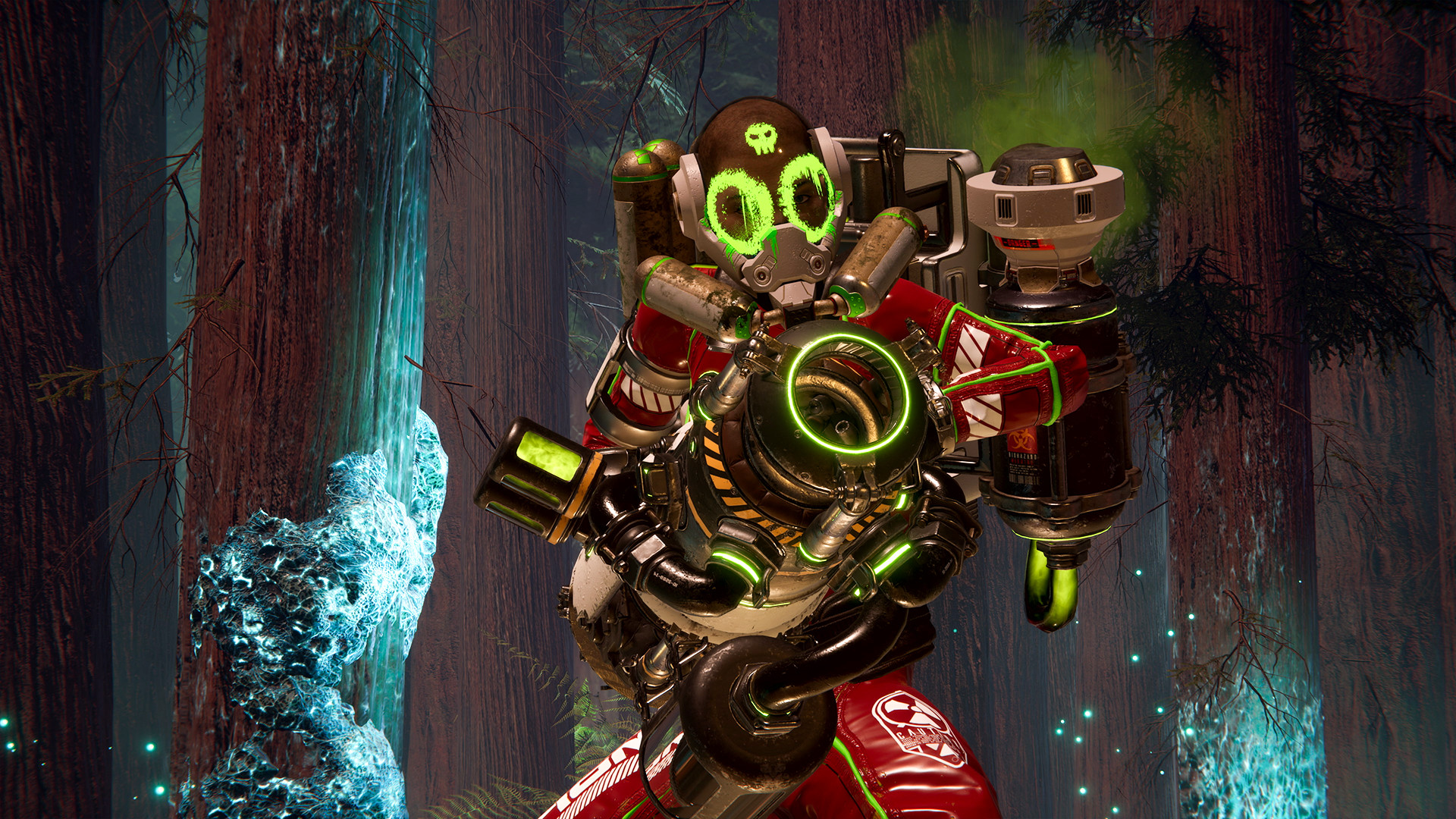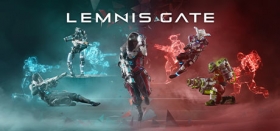
Lemnis Gate Review
Lemnis Gate, the proverbial “thinking man’s” FPS, is a turn-based competitive arena shooter where you have five turns to make your plays toward objectives in a 25 second time loop. Featuring a selection of seven different operatives with their own specific armaments and abilities, it’s your job to feed more and more chaos into those 25 seconds of play and secure victory.
I’ll start by saying that this game isn’t like any shooter I’ve played before. Sure, it borrows a lot from the tried-and-tested hero shooter formula, but those elements in this game are stepping stones on a path to a wholly refreshing experience. An experience which, if you’re one to place a lot of blame on your teammates for your shortcomings in competitive games, might be devastatingly introspective for you.
When you first launch a new shooter, you’ll usually want to hop straight into the action, as your transferable skills will carry you until you adapt to whatever nuanced additions that title would have. With Lemnis Gate however, I highly advise you to spend some time with the tutorial. All the standard FPS controls will be familiar, but you’ll be introduced to how a standard game of Lemnis Gate will function.
You have the option of 1v1 or 2v2 games, with 1v1 having two modes; alternating turns, which is the mode that most players seem to be queuing, or both players taking their turns simultaneously. The simultaneous turn mode harkens back to more traditional FPS engagements, with a lot more reliance on out-aiming your opponent, whilst the alternating turns mode functions more like the most violent game of chess you’ve ever played.

This ain't your mama's spud gun
The general premise of the game is this: one player will start, allowing a short period of time to scout out the map with a flying drone, before selecting one of the seven operators they’d like to use on their turn. Once selected, the 25 second round will start, and they can make their play for the objective. Once that turn is over, the actions of that unit will be recorded in that time loop, and the opposing player will take their turn, introducing their selected operative, who can choose to make their own play for the objective, or try to kill the opponent's operative. This is repeated until both players have taken five turns, each time introducing a new operative to the time loop. Every action you make is recorded, even if your operative dies during the action, so you can continue moving them in a ghost form, recording movements and damage output, so if you are able to prevent that unit’s death in a future turn, their actions will still be able to take effect in the loop. That’s a lot to take in, I know. The tutorial does a fantastic job of ushering you through how it all works, so like I said, make sure you stop there first. This game requires you to put in a lot of thought to ensure you’re making the most of each turn, whilst also concentrating on every aspect of your opponent’s turn to cement a solid counter-attack, and the tutorial is the perfect space to test your new perspective.
The game generally handles really well, with the operatives having responsive movement and momentum, borrowing from Apex Legend’s slide and bunny hop controls, whilst the guns perform uniquely separate from each other, all with a satisfying weight to them. If you know how to play an FPS, then your abilities will be welcomed here, such as with Striker, the sniper operative, requiring that extra touch of care, or Deathblow, the heavy weapons fella, unleashing hell with his rocket launcher. Speaking of the operatives, Ratloop Games Canada has provided them all with a solid bit of life, thanks to a tidy little lore background blurb on their customisation screens, as well as the perfect amount of snarky voice lines that you’d expect from any hero shooter worth its salt.
The customisation options do leave a little to be desired however. Through a mastery system, you can unlock variations of each operative's assigned weapon with alternative stats, but the actual character customisation options are currently limited to unlocking colour variations of their default attire. Each character also has a taunt animation, for example, with Rush, the dual-pistol wielding speedster, possessing a nice little nod to Revolver Ocelot’s infamous gun spinning routine, whilst also each having an extra one to unlock with further masteries.

Tell me your operator specialty is poison without telling me your operator specialty is poison
There are four core game modes, with three dedicated maps for each, a total of twelve; Seek & Destroy, where a player spends one half of the game protecting Resistors from their opponent, before swapping roles in the second half, Retrieve XM, where you have several balls of Exotic Matter on the map that you have to retrieve and bring to your gate, Domination, where you have to secure Particle Accelerator stations, and the genre-standard Deathmatch.
Seek & Destroy is a mode I found particularly frustrating. In Lemnis Gate as a whole, whichever player that goes second has the inherent advantage of clarity, which means further turns from the starting player becomes a plate-spinning act of trying to cancel out your opponent’s reactive plays, staying alive, and securing further objectives. Whilst you do swap sides at the end of the half, and the final score is tallied from points acquired throughout the game, you might find yourself feeling a little dejected when playing on attack. In Domination and Retrieve XM modes, you have the added benefit of neutral objectives to capture, allowing for more flexible plays during your turns, as opposed to the more binary attack/defend aspect of Seek & Destroy.
As a whole, I did enjoy my experience with Lemnis Gate. It’s an experience that rewards fourth-dimensional strategies, whilst also being rather unforgiving to mistakes. That being said, there are some setbacks.
I experienced quite a few issues trying to find a 2v2 game, and when I did find one, I only managed to play two games where all four members of the game remained connected for the whole session. It’s a great shame, because although the 1v1 mode seems to be the main focus and will likely be the bread and butter of the Lemnis Gate playerbase, 2v2 offers a larger and more interesting variety of turn options. Even with all 2v2 modes selected, I found myself queuing for lengthy periods of time in the casual lobbies, but secured a few games punctually in the ranked queues. I’m certain this will be less of an issue as the player base continues to grow, and more people see the charm in the 2v2 modes, but for now, you might be better off finding some friends to experience the hectic chaos of a 2v2 simultaneous turn game.

Ready squad? It's the last shot in the disposable camera, so pose just like we practiced
There’s also a handful of bugs that caused several crashes, and quite a few server disconnects. Reassuringly though, Ratloop Games Canada has acknowledged the bugs and confirmed an upcoming patch.
Whilst it may in equal parts hurt your head, frustrate the hell out of you, and make you laugh with psychotic glee as a plan perfectly falls together on your last turn, Lemnis Gate is a game that any FPS player who is looking for something with more depth should experience. It’s early days yet for the ambitious shooter, but I’m looking forward to what the future holds for Lemnis Gate (get it?).
If you’re still struggling to wrap your head around the concept, I’ll quote the eternal words of the illustrious Emmett Brown, “you’re not thinking fourth dimensionally”.
Lemnis Gate (Reviewed on Windows)
This game is good, with a few negatives.
A game that will test your trigger finger as well as your strategic planning, Lemnis Gate is a refreshing entry into the competitive shooter market, forming a solid foundation full of promise and subtle charm.









COMMENTS